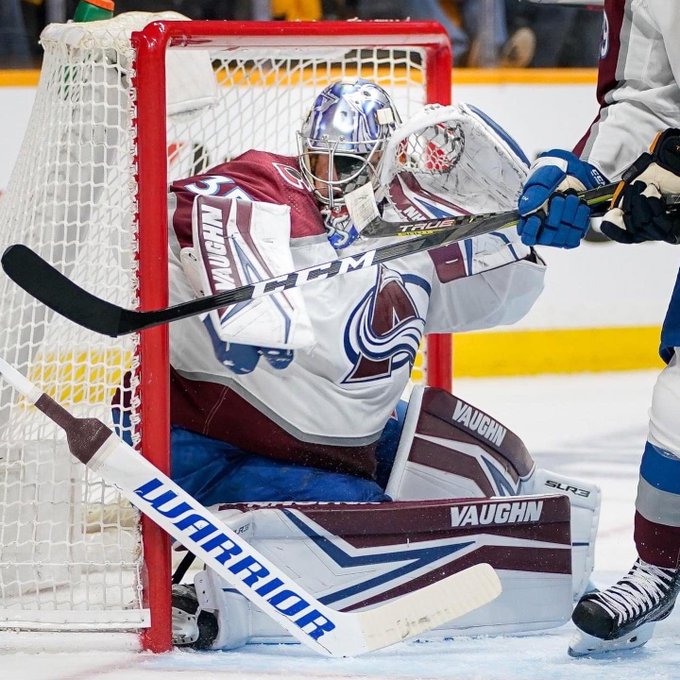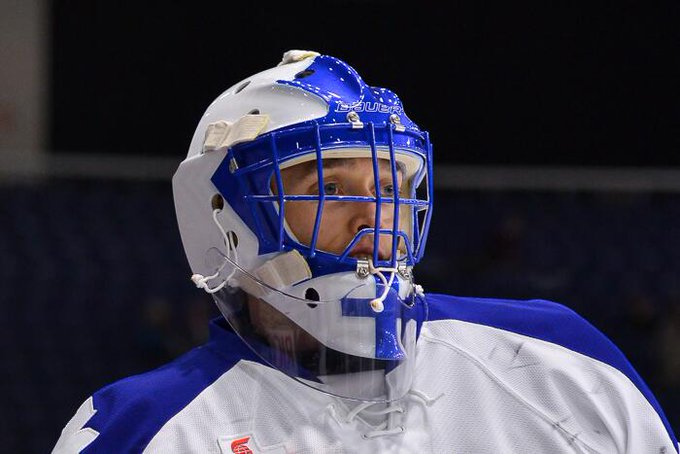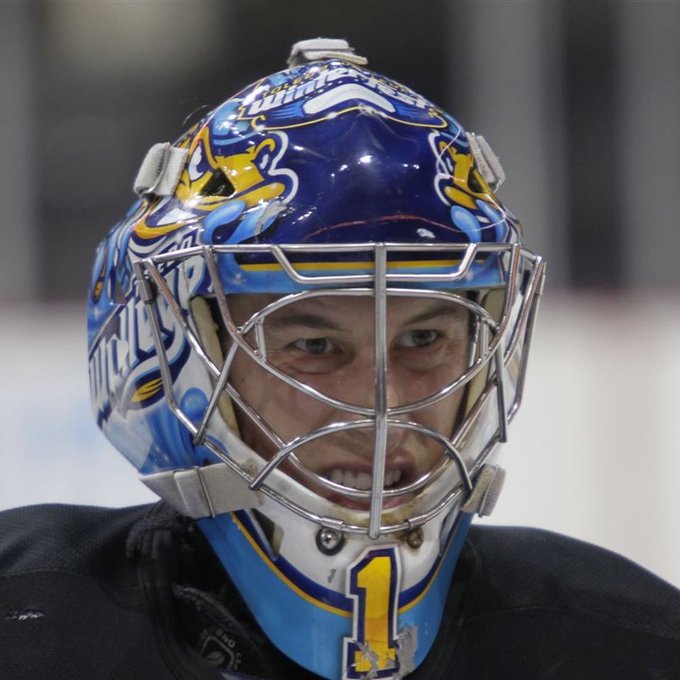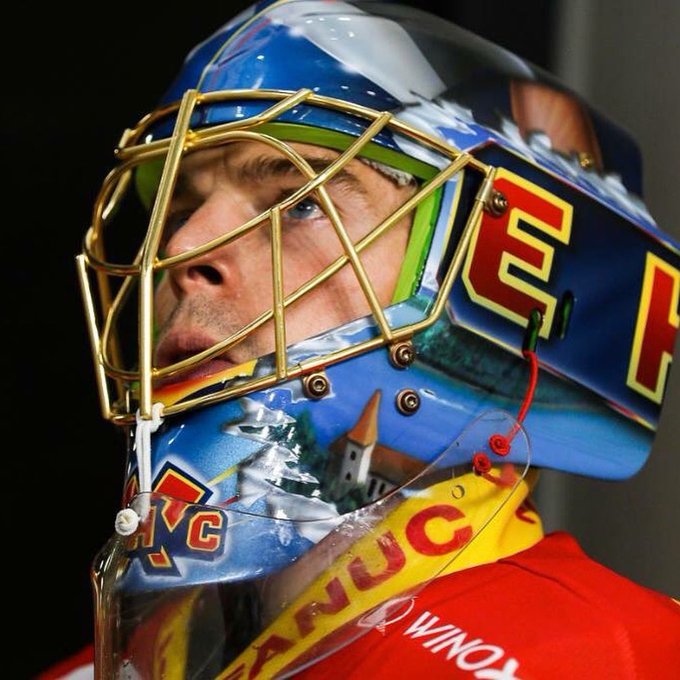McKenna’s Musings: Why goalies accept the risk of cat eye cages
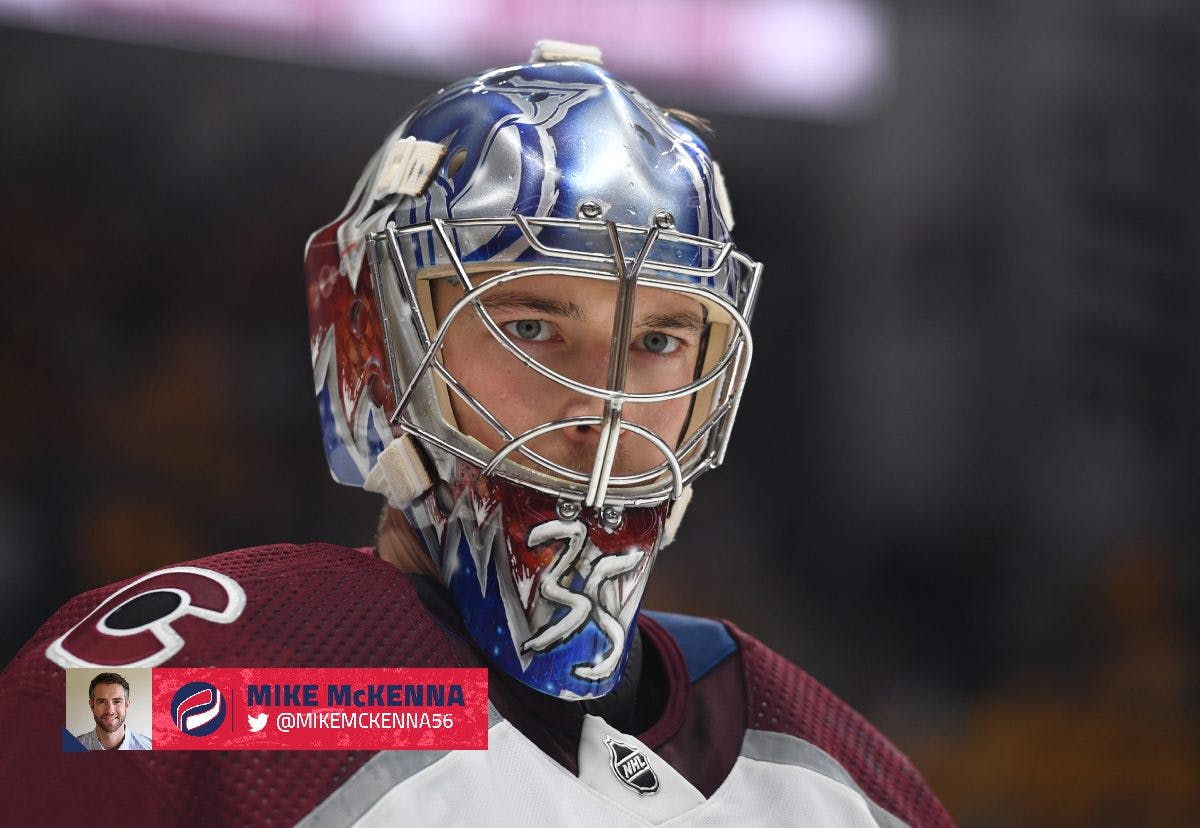
For this week’s edition of McKenna’s Musings, I decided to stay in my lane. All goalie. During the Stanley Cup playoffs, there’s never a shortage of crease-related topics. So here’s a closer look at two of the major goaltending storylines.
Goalies all know that a hockey stick might get through the cat-eye cage, but they’re willing to take the risk.
When Colorado Avalanche goaltender Darcy Kuemper took a stick to the face from Nashville Predators forward Ryan Johansen late in the first period of Game 3, the hockey world collectively gasped.
Thread: Scary moment this weekend as Darcy Kuemper took a stick blade to the eye. While he’ll sit out tonight’s game to allow the injury to heal, he’s expected to make a full recovery. 1/3
Any time something gets close to a player’s eyes – be it a stick or puck – it’s worrisome. There’s potential for a career-altering injury.
It was scary, and it will happen again. The way most goalie masks are built, enough room exists for a stick to work its way through the cage and impact the netiminder’s face.
Most goaltenders use a cateye cage, where the bars arc around the eyes. That allows for optimal vision. No bars obscure sightlines. But there are several vulnerable openings in the cage.
The solution would be to go with HECC-approved goalie cages that feature vertical and horizontal bars. Several goalies – John Vanbiesbrouck and Kelly Hrudey immediately come to mind – have used the approved cage with success in the NHL.
But it’s not the norm. The last NHL goaltender I can remember to use a non-cateye cage was Drew MacIntyre back in 2014 when he suited up for the Toronto Maple leafs.
During his junior career with the Sherbrooke Castors of the QMJHL, Drew suffered an eye injury while wearing a cateye cage. That prompted the entire CHL to mandate cages with rectangular openings.
#MarliesLive Photo: A closer look at Drew MacIntyre's new mask. What do you think?
I don’t see that happening in the NHL. Goaltenders all know the risk associated with the cateye cage.
I sure did. During my college career at St. Lawrence University, I wore a HECC-approved cage. But the moment I turned pro in 2005, I switched to the cateye. I thought it was much easier to see through. Could I have played with the approved cage? Definitely. But it wasn’t my preference.
Could changes be made to make it safer? Sure. And examples exist, as you can see in the tweet below.
These changes could be very simple, such as the small bars @jlerg1 added to his cage and/or requiring an “open mouth design” like what Jonas Hiller wore. These would provide better vision than a certified cat eye but more protection than the current design. 3/3
It comes down to the major equipment manufacturers improving upon their current product. Both examples worn in the tweet – by goaltenders Jeff Lerg and Jonas Hiller – are custom cages.
Even then, I’m not sure how many goalies would switch. There hasn’t been much appetite in the past, no matter the level of danger associated with the cateye design.
I think the NHL has been consistent about goalie interference this season, but I have a problem with Jake DeBrusk’s tying goal in Game 4 of the series between the Boston Bruins and Carolina Hurricanes.
It’s been a few days since the play happened, but I stand by my initial assessment. The goal never should have counted.
Goalie interference. 100%. All day long. DeBrusk's stick, not Pesce's. Far more than just 'incidental contact' as allowed in the rulebook. I do not agree with the call.
You want the overhead or the behind the net view where Debrusk pushes Raanta pad into the net before he bangs the puck in
The tweet above was my gut reaction. I didn’t see Pesce’s stick hit Raanta’s thigh rise until I watched the replay a few more times. So I decided to clarify with another tweet.
WAIT. Looking at it for the thousandth time. Pesce's stick hits Raanta's thigh rise. So both DeBrusk and Pesce appear to have thrown Raanta off balance. BUT. DeBrusk does make significant contact. I still think this shouldn't have counted base on that.
I can understand why the NHL let the goal stand. Since we don’t get a full explanation on every review, my assumption is that the contact between Pesce’s stick and Raanta’s thigh rise was taken heavily into account.
The NHL must have decided that the causation for Raanta being knocked out of position was undeterminable. Was it DeBrusk’s stick? Was it Pesce’s? Was it both? There’s definitely a gray area.
But as a former goaltender, I can unequivocally tell you that DeBrusk’s stick is the reason why Raanta was knocked out of position. When someone pushes that hard on the boot break – the crease between the foot and shin of the goalie pad – it’s nearly impossible to hold tight against the post and remain balanced.
Had it just been Pesce’s stick pushing against Raanta, the thigh rise of the goaltender’s pad may have moved. But without the push from DeBrusk, Raanta’s left foot would have stayed planted. In my eyes, the impact from DeBrusk is the reason why Raanta’s ability to make the save was compromised.
I know people love to complain about goalie interference, and admittedly, it can be hard to understand the complexities of the rule. And ultimately, each review becomes a judgment call.
But I think the NHL did a really good job during the 2021-22 regular season of being consistent. If contact occurred inside the blue paint, goals were regularly waved off. If there was a battle in the crease, so long as the goalie had a chance to make the save, goals counted.
It got to a point where I could accurately predict whether a goal was going to be allowed or not. I can’t think of any that I missed during the regular season.
But in this case, I agree with Hurricanes coach Rod Brind’Amour and Raanta. It was a bad call. Jake DeBrusk’s stick is the reason why Antti Raanta wasn’t able to do his job. The goal should have been called back.
____
POINTSBET CANADA IS LIVE IN ONTARIO

PointsBet Canada has officially launched in Ontario! Get more details right here!
Recently by Mike McKenna
- What Game 4 can tell us about Game 5 between the Wild and Blues
- How did the Minnesota Wild turn the tables on the St. Louis Blues in Game 2?
- What went right for the Blues – and wrong for the Wild – in Game 1
- McKenna’s Musings: Sorry, Toronto, but the Tampa Bay Lightning are peaking at the right time
- Ryan Getzlaf and why leaving on your own terms matters
More from Mike McKenna
- Ranking every NHL goalie tandem for 2023-24
- Staring down Lou: How standing up for yourself can change a player’s career
- Why it’s time to embrace ‘gambles’ like the Jake Sanderson contract
- Why we shouldn’t view Sheldon Keefe’s contract extension as a vote of confidence
- ‘Two Sean O’Connors?’ NHL training camps bring the funny – and the weird
